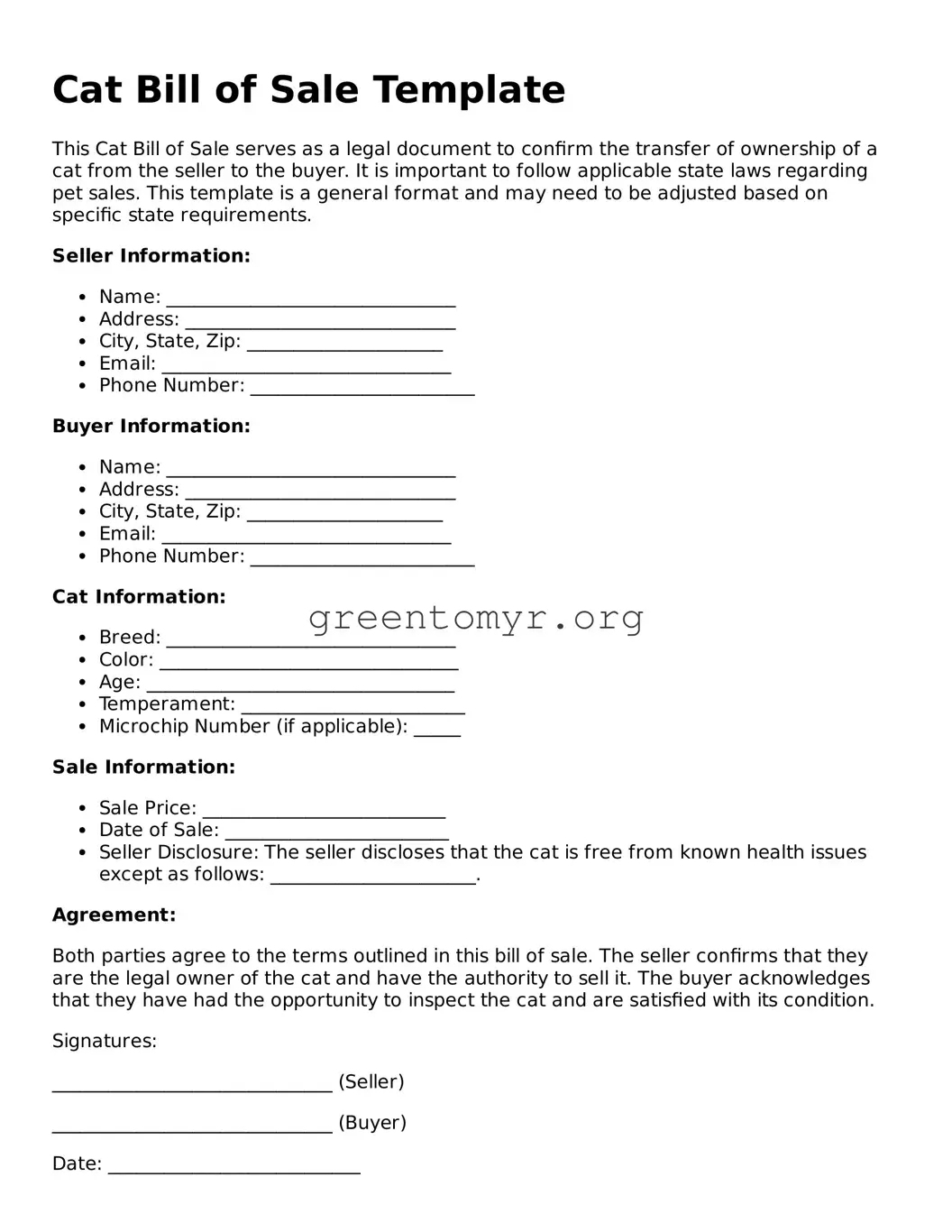Cat Bill of Sale Template
This Cat Bill of Sale serves as a legal document to confirm the transfer of ownership of a cat from the seller to the buyer. It is important to follow applicable state laws regarding pet sales. This template is a general format and may need to be adjusted based on specific state requirements.
Seller Information:
- Name: _______________________________
- Address: _____________________________
- City, State, Zip: _____________________
- Email: _______________________________
- Phone Number: ________________________
Buyer Information:
- Name: _______________________________
- Address: _____________________________
- City, State, Zip: _____________________
- Email: _______________________________
- Phone Number: ________________________
Cat Information:
- Breed: _______________________________
- Color: ________________________________
- Age: _________________________________
- Temperament: ________________________
- Microchip Number (if applicable): _____
Sale Information:
- Sale Price: __________________________
- Date of Sale: ________________________
- Seller Disclosure: The seller discloses that the cat is free from known health issues except as follows: ______________________.
Agreement:
Both parties agree to the terms outlined in this bill of sale. The seller confirms that they are the legal owner of the cat and have the authority to sell it. The buyer acknowledges that they have had the opportunity to inspect the cat and are satisfied with its condition.
Signatures:
______________________________ (Seller)
______________________________ (Buyer)
Date: ___________________________
This document is intended to serve as a receipt for the transaction and should be retained by both parties for their records.
